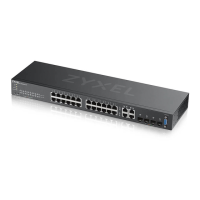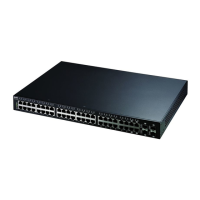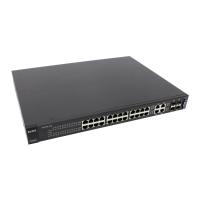Chapter 24 Multicast
GS2220 Series User’s Guide
223
C HAPTER 24
Multic a st
24.1 Multic a st O ve rvie w
This chapter shows you how to configure various multicast features.
Traditionally, IP packets are transmitted in one of either two ways – Unicast (one sender to one recipient)
or Broadcast (one sender to everybody on the network). Multicast delivers IP packets to just a group of
hosts on the network.
IGMP (Internet Group Management Protocol) is a network-layer protocol used to establish membership
in a multicast group
– it is not used to carry user data. Refer to RFC 1112, RFC 2236 and RFC 3376 for
information on IGMP versions 1, 2 and 3 respectively.
24.1.1 Wha t You C a n Do
• Use the Multic a st Se tup screen (
Section 24.2 on page 227) to display the links to the configuration
screens where you can configure IPv4 multicast settings.
• Use the IPv4 Multic a st Sta tus screen (Section 24.3 on page 227) to view IPv4 multicast group
information.
• Use the IG MP Sno o ping screen (Section 24.3.1 on page 228) to enable IGMP snooping to forward
group multicast traffic only to ports that are members of that group.
• Use the IG MP Sno o ping VLAN screen (Section 24.3.2 on page 231) to perform IGMP snooping on up to
16 VLANs.
• Use the IG MP Filte ring Profile (Section 24.3.3 on page 232) to specify a range of multicast groups that
clients connected to the Switch are able to join.
• Use the IPv6 Multic a st Sta tus screen (Section 24.4 on page 234) to view IPv6 multicast group
information.
• Use the MLD Sno o ping - pro xy screen (Section 24.4.1 on page 234) to enable the upstream port to
report group changes to a connected multicast router and forward MLD messages to other upstream
ports.
• Use the MVR screens (
Section 24.5 on page 240) to create multicast VLANs and select the receiver
ports and a source port for each multicast VLAN.
24.1.2 Wha t You Ne e d to Kno w
Read on for concepts on Multicasting that can help you configure the screens in this chapter.

